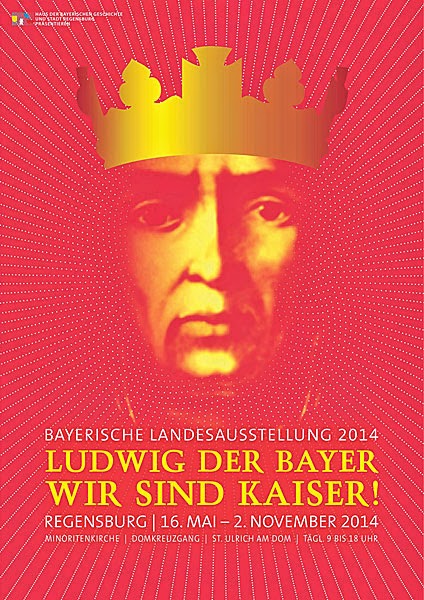The big exhibition organized to commemorate the 600th anniversary of the Council of Constance opened last weekend at Constance. One of the central figures of the exhibition is Emperor Sigismund, who was also the King of Hungary. However, Germany celebrates a number of other Holy Roman Emperors this year with major exhibitions - here is an overview.
Charlemagne (Karl der Grosse) - First on the list is the first emperor of the Middle Ages, Charlemagne. He died in 814, so 1200 years ago. To commemorate this event, three major exhibitions will take place in Aachen in 2014, dedicated to the culture and courtly life of Charlemagne. The trio of exhibitions will be opened on 19th June 2014 by their official patron, the Federal President. They will run from 20th June to 21st September 2014 in three prestigious venues – the Coronation Hall in Aachen’s Town Hall, the Centre Charlemagne on the Katschhof, and the Cathedral Treasury – and will present the impact, art and culture of Charlemagne. You can find more information on the three exhibitions and the three venues, as well as on the Route Charlemagne Aachen on the exhibition website. You can also have a look at this press release announcing the exhibitions (pdf).
The second emperor to be commemorated is Louis IV, called the Bavarian (Ludwig der Bayer), who ruled from 1314 until 1347. 'Ludwig the Bavarian. We are emperor!’ will be the title of the upcoming Bavarian Regional Exhibition which will tell the fascinating story of the first member of the House of Wittelsbach to ascend the imperial throne in Regensburg. The occasion is the 700th jubilee of Ludwig’s coronation as King of the Romans in 1314 (he was crowned Emperor in 1328). For the first time a large exhibition will focus on this important ruler of the late Middle Ages. The exhibition grants the visitor an insight into the history of the Bavarian duke, German king and Holy Roman Emperor and the time between 1300 and 1350, during which Bavaria became the center of Europe. The exhibition will be at the Haus der Bayerischen Geschichte in Regensburg, and will be on view from May 19th until November 2, 2014. The churches and smaller museums of the town will also serve as exhibition venues.
Finally, I would like to return to the exhibition in Constance (Konstanz), which is on view from April 27 until September 21, 2014. 2014 marks the 600th anniversary of the beginning of the Council of Constance. The Council was a major event in church politics which made Constance the center of European politics and a meeting place of European cultures in the years 1414-1418. Baden-Württemberg commemorates the anniversary of the world event of the late Middle Ages with a Great State Exhibition. The exhibition was organized by the Badische Landesmuseum in Karlsruhe. The main figure of the Council was Emperor Sigimund, who ruled as King of Hungary from 1387, and was elected King of the Romans in 1411. He ruled until 1437, and was crowned Emperor only in 1433. The exhibition is on view in the actual building in which events took place in Constance. I will report on the exhibition and the accompanying publications in more detail soon (and you can also read my preliminary report). A website has been set up for the series of events during the next four years, and also for the exhibition itself.



.jpg)
